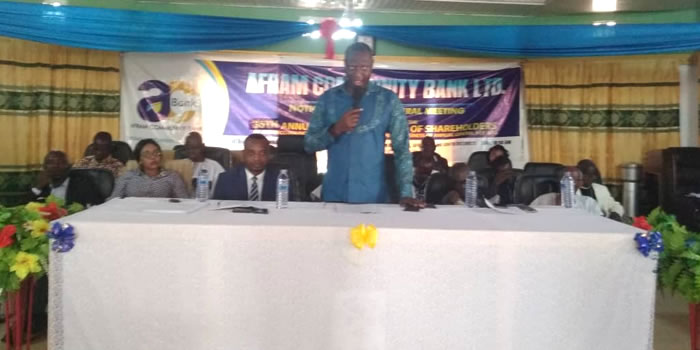

Disability
Introduction
The chapter analyses the distribution of population with disability, types of disability and disability type by economic activity. Persons with disability (PWDs) have been defined as those who were unable to or were restricted in the performance of specific tasks/activities due to loss of function of some part of the body as a result of impairment or malformation.
Due to this, PWDs face a wide range of life challenges because disability, in whatever form or type, can reduce an individual’s ability to function to his/her full potential. Disability can limit an individual’s full participation in a number of activities in life.
The prevention of disability and ensuring care for PWDs and helping them to become productive citizens is an important aspect of national development. It is against this background, that the government has enacted the Disability Act to address issues of high poverty among PWDs due to low levels of education and lack of employable skills.
In an effort to address the situation of PWDs as a guide for policy formulation, the Ghana Statistical Service, for the first time, collected specific data on PWDs in the 2010 Population and Housing Census.
Population with Disability
Table 6.1 shows that a total of 2,220 persons having some form of disability and this constitutes (1.9%) of the population in the district. There are slightly more males, two percent with disability than there were females (1.8%). It is also evident from Table 6.1 that, in urban areas disability among males and females is the same at (1.4%).This is different in the rural areas with the males recording (2.3%). as against their female counterparts (1.9%).
Type of Disability
The six major types of disability reported within the population in the Kwahu Afram Plains South for the 2010 PHC is shown in Figure 6.1. The data indicates that sight is the highest form of disability in the district (41.8%) followed by physical (22.3%) and Hearing (20.9%). The ‘other’ type of disability recorded the lowest (8.9%) in the district.
Disability by Type of Locality
The Table shows that in the district just a little over one percent (1.9%)of the population have a form of disability and with respect to gender 2.0 percent males and 1.8 percent females have a form of disability. In terms of place of locality, 1.4 percent of the population with disability are in the urban areas against 2.1 percent in the rural areas.
With respect to gender there are more females with disability in both the urban and rural areas in the district with 1.4 percent and 2.1 percent respectively than males.
The Table again indicates that sight disability is the most predominant type in the district for both males and females with 41.6 percent and 42.2 percent respectively. For place of locality there are less persons Disability and Economic Activity
Table 6.2 presents the economic activity status of persons with disability by sex for persons 15 years and older.
For all types of disability in the district, a total population of 66,528 is disabled in the district. There are about two out of every ten (23.2%) persons with disability who are economically not active and eight of ten (76.8%) who are economically active.
Within the disabled economically active population, almost two percent (1.9%) are in the unemployed group while 98.1 percent are employed. For both sexes, about 4.0 percent of the physically disabled persons are unemployed compared to 96 percent who are employed. Table 6.2 also shows that about one fifth (18.6%) of the population with hearing disability are economically not active.
Considering disability status by economic activity status and sex, Table 6.2 indicates that there are 36,301 males representing 54.6 percent compared to 30,227 females representing 45.4 percent.
The percentages for disabled males who are employed (99.0%) compared to disabled females who are employed (9.8%). On the other hand, disable males who are unemployed compared to disabled females who are unemployed females are one percent and 3.2 percent respectively in the district.
Disability, Education and Literacy
From the Global Monitoring Report (2007), “93 Education for All” indicates that majority of children with disabilities in Africa do not attend school. The report indicates that of the 72 million primary aged children worldwide who are out of school, one third have disabilities (ghanaweb). The Kwahu Afram Plains South had made a tremendous stride over third of the total disabled population had attained some level of education.
A look at the Table 6.5 indicates that males who have been to school with emotional disability outnumber all the other forms with 62.3 percent, 41.9 percent with sight disability have basic education and 10.1 percent with emotional disability also have sec/
The Table further reveals that females with emotional disability with no education accounts for 71.9 percent, 32.6 percent with sight disability have basic education and finally 4.2 percent with similar disability have sec/SHS and higher education in the district.
For all the 45 forms of disability in the district males with no education have more disabilities compared to their female counterparts but the trend changes as the higher educational attainments are concerned. The number with basic education for instance with the all forms of disability is less for males to females though in total is reduced for all sexes in the district. SHS and higher education in the district.
Date Created : 11/26/2017 4:03:56 AM










 facebook
facebook
 twitter
twitter
 Youtube
Youtube
 +233 593 831 280
+233 593 831 280 0800 430 430
0800 430 430 GPS: GE-231-4383
GPS: GE-231-4383 info@ghanadistricts.com
info@ghanadistricts.com Box GP1044, Accra, Ghana
Box GP1044, Accra, Ghana